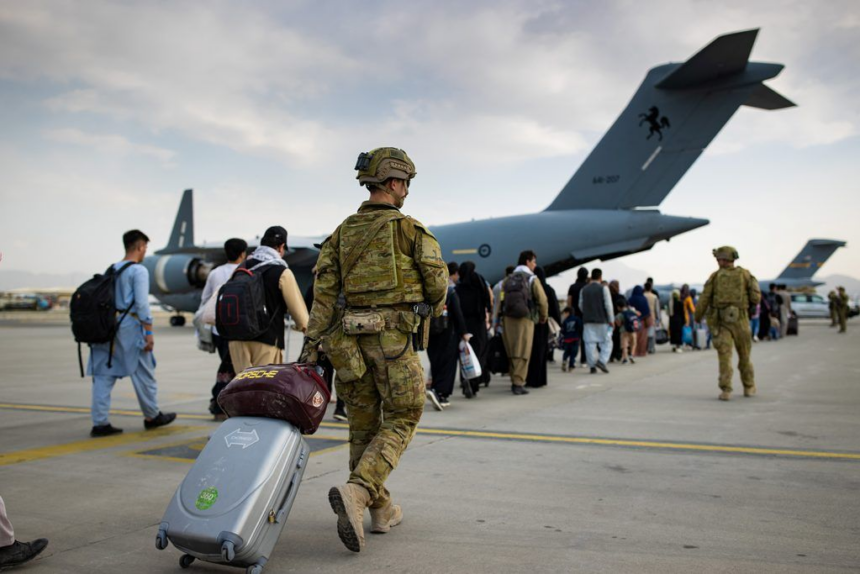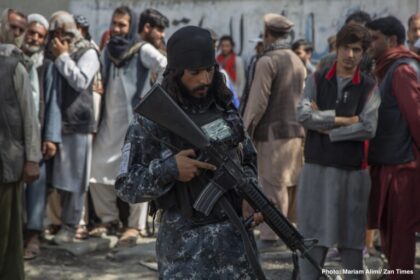RASC News Agency: A newly released report by the Office of the Inspector General at the U.S. Department of Justice has exposed serious security lapses during the hurried evacuation of Afghanistan in the aftermath of the Taliban’s violent return to power. The findings reveal that at least 55 individuals with suspected links to terrorist activities were evacuated to U.S. soil without proper vetting, amid the disarray that followed the fall of Kabul in August 2021. The report, published on Tuesday, June 10, underscores the inherent dangers of what has become one of the most disorderly mass evacuations in modern history one precipitated by the Taliban’s sudden seizure of power and the subsequent collapse of Afghanistani state institutions. According to FBI investigators, several of the individuals airlifted out of Afghanistan had already been flagged on U.S. terrorism watchlists, raising serious concerns about systemic flaws in the emergency resettlement process.
U.S. intelligence officials noted that the lack of time, the absence of reliable documentation, and the overwhelming human influx into Hamid Karzai International Airport made it impossible to conduct comprehensive background checks on all evacuees. The Taliban’s takeover not only destroyed the institutional capacity to identify threats but also created a fertile ground for extremist infiltration, with some individuals exploiting the chaos to blend in among civilians fleeing for their lives. At the height of the evacuation, the U.S. military airlifted over 90,000 Afghanistanis, including civil servants, former military personnel, foreign aid workers, and their families most of whom had legitimate fears of Taliban retribution. However, the Justice Department’s report identifies a significant security vacuum, highlighting that no structured mechanism was in place to thoroughly assess each evacuee’s identity and affiliations.
The Inspector General’s findings have renewed bipartisan scrutiny in Washington. Republican lawmakers in particular have sounded the alarm, warning that the hasty withdrawal compromised U.S. national security. Former President Donald Trump’s administration subsequently halted the transfer of additional Afghanistanis from third countries such as Pakistan, citing incomplete vetting procedures. While the report acknowledges that U.S. security agencies were able to identify and contain the majority of threats, the details remain alarming:
Of the 55 individuals with flagged security profiles:
4 remain under active interrogation, 4 are under surveillance for ties to known terrorist groups, 1 has reportedly exited the United States, The remaining 46 have been removed from the watchlist due to insufficient evidence.
In a statement, Michael Horowitz, the Inspector General of the Department of Justice, noted that although federal agencies responded with urgency and competence, the situation exposed deep vulnerabilities in America’s emergency response frameworks. He emphasized the need for more robust systems in future humanitarian or conflict-driven evacuations. The report also sheds light on the frightening disorder that marked the final days of Kabul’s fall. As Taliban forces swept into the capital, tens of thousands of desperate civilians former government workers, interpreters, journalists, and NGO staff converged on the airport, seeking passage out of a country that had suddenly reverted to Taliban authoritarianism. With time running out and security deteriorating rapidly, U.S. and allied forces prioritized speed over scrutiny, leaving the gates open for exploitation.
That tragic urgency culminated in the ISIS-K suicide bombing at Abbey Gate, which killed 13 U.S. service members and over 170 Afghanistani civilians. The bombing underscored the Taliban’s failure to maintain basic security, despite their claims of establishing control over the capital. Instead, their resurgence effectively enabled the resurgence of regional terror groups, deepening instability and magnifying global security threats. While Taliban spokesmen have consistently denied the presence of foreign fighters and extremist factions under their protection, intelligence assessments contradict these claims. The Taliban’s ideological alignment with violent jihadist networks, its track record of sheltering global terrorists, and its unwillingness to establish transparent counterterrorism mechanisms have left both Afghanistan and the wider world more vulnerable.
In conclusion, this report is not just a postmortem of a chaotic evacuation it is a damning indictment of the Taliban’s complicity in the destabilization of regional and global security, and a call for the international community to re-evaluate its engagement with the Taliban regime, which continues to rule through fear, repression, and duplicity.






